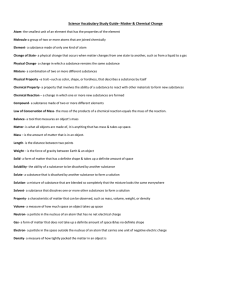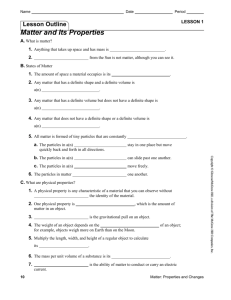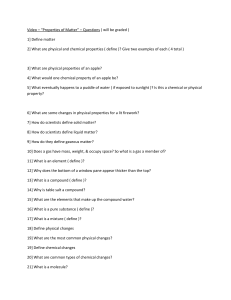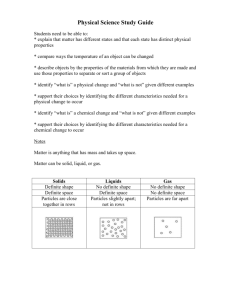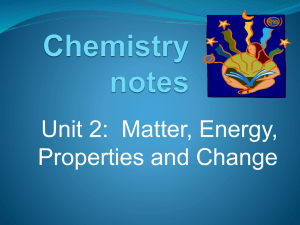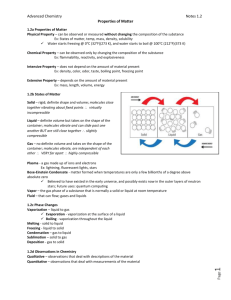Unit 2 Vocabulary - Riverdale Middle School
advertisement
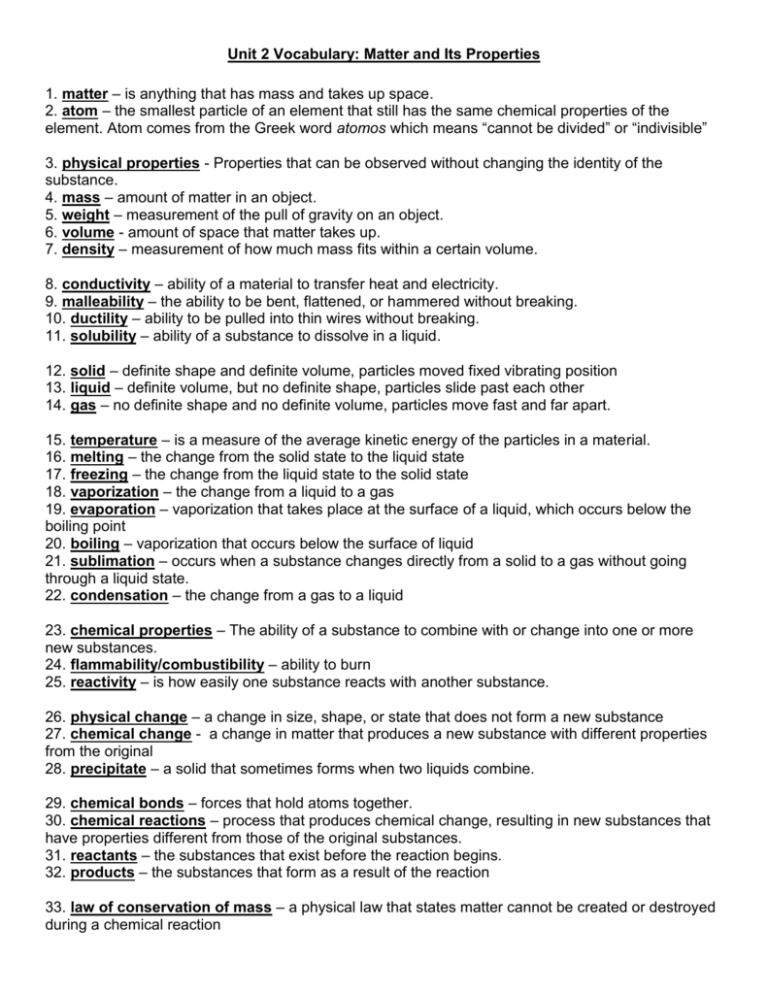
Unit 2 Vocabulary: Matter and Its Properties 1. matter – is anything that has mass and takes up space. 2. atom – the smallest particle of an element that still has the same chemical properties of the element. Atom comes from the Greek word atomos which means “cannot be divided” or “indivisible” 3. physical properties - Properties that can be observed without changing the identity of the substance. 4. mass – amount of matter in an object. 5. weight – measurement of the pull of gravity on an object. 6. volume - amount of space that matter takes up. 7. density – measurement of how much mass fits within a certain volume. 8. conductivity – ability of a material to transfer heat and electricity. 9. malleability – the ability to be bent, flattened, or hammered without breaking. 10. ductility – ability to be pulled into thin wires without breaking. 11. solubility – ability of a substance to dissolve in a liquid. 12. solid – definite shape and definite volume, particles moved fixed vibrating position 13. liquid – definite volume, but no definite shape, particles slide past each other 14. gas – no definite shape and no definite volume, particles move fast and far apart. 15. temperature – is a measure of the average kinetic energy of the particles in a material. 16. melting – the change from the solid state to the liquid state 17. freezing – the change from the liquid state to the solid state 18. vaporization – the change from a liquid to a gas 19. evaporation – vaporization that takes place at the surface of a liquid, which occurs below the boiling point 20. boiling – vaporization that occurs below the surface of liquid 21. sublimation – occurs when a substance changes directly from a solid to a gas without going through a liquid state. 22. condensation – the change from a gas to a liquid 23. chemical properties – The ability of a substance to combine with or change into one or more new substances. 24. flammability/combustibility – ability to burn 25. reactivity – is how easily one substance reacts with another substance. 26. physical change – a change in size, shape, or state that does not form a new substance 27. chemical change - a change in matter that produces a new substance with different properties from the original 28. precipitate – a solid that sometimes forms when two liquids combine. 29. chemical bonds – forces that hold atoms together. 30. chemical reactions – process that produces chemical change, resulting in new substances that have properties different from those of the original substances. 31. reactants – the substances that exist before the reaction begins. 32. products – the substances that form as a result of the reaction 33. law of conservation of mass – a physical law that states matter cannot be created or destroyed during a chemical reaction
